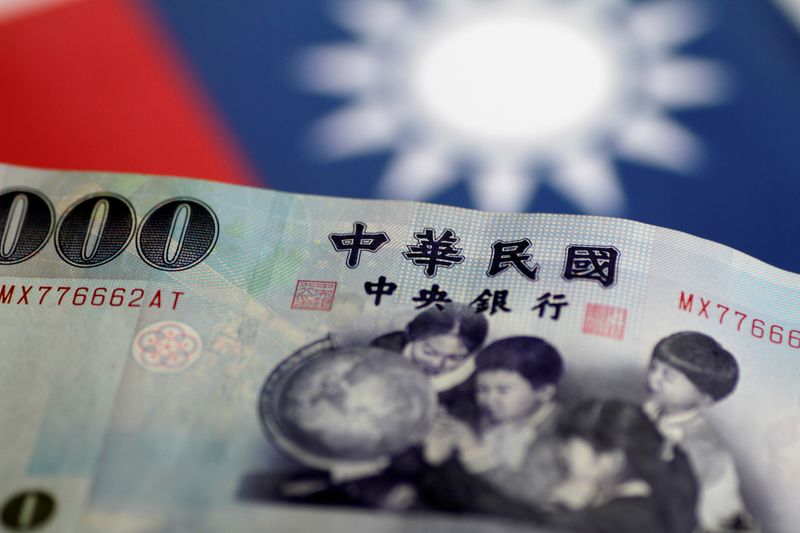Wall St futures flat amid US-China trade jitters; bank earnings in focus
Investing.com -- The Taiwan Dollar (TWD) has seen an unexpected and remarkable increase in value over the past week, a move that has been closely observed by UBS’s EM FX strategists. This recent appreciation of the TWD has been captured through a short CNHTWD trade.
The Hong Kong Monetary Authority (HKMA) has responded to this development by aggressively selling Hong Kong Dollars (HKD) to maintain the USDHKD within its designated range. This suggests that other Asian currencies with strong Net International Investment Position (NIIP) are also experiencing significant appreciation pressure.
The TWD’s value increase aligns with the EURTWD and JPYTWD returning to their early January levels. This suggests that the TWD’s appreciation is part of a larger trend of USD weakness that is already evident in currencies without a regular central bank presence.
In terms of the G10 spot price movements this month, the Australian Dollar (AUD) and New Zealand Dollar (NZD) are the top performers, while the USD is the main underperformer. The AUD and NZD’s performance is likely due to their close reflection of the market’s sentiment towards non-Japan Asian currencies.
The market appears to favor strong Asian NIIP positions, and there is a modest increase in optimism regarding further US tariff concessions as trade talks progress. This shift in sentiment has reversed the AUD and NZD’s previous underperformance against European currencies following the April 2 tariff announcements.
Despite the recovery of US equities to early April levels and the VIX index falling below 30, the USD has not shown strong recovery. This is notable, particularly as US data over the past week has been mostly positive, and US 2-year yields have risen around 15 basis points. The market’s speculative short position on the USD, which in theory should have led to a short squeeze, has not materialized. This lack of USD rally on positive news suggests that the USD is in a structural downtrend.
This week, the market will closely watch the Federal Open Market Committee (FOMC) meeting, where no rate cut is expected, and the Bank of England (BoE) meeting, where a 25 basis point rate cut is anticipated. The FOMC meeting could trigger a strong market reaction if it reignites discussions about Fed Chair Powell. The BoE meeting could cause significant market fluctuations if multiple votes for 50 basis point cuts are seen.
This article was generated with the support of AI and reviewed by an editor. For more information see our T&C.
